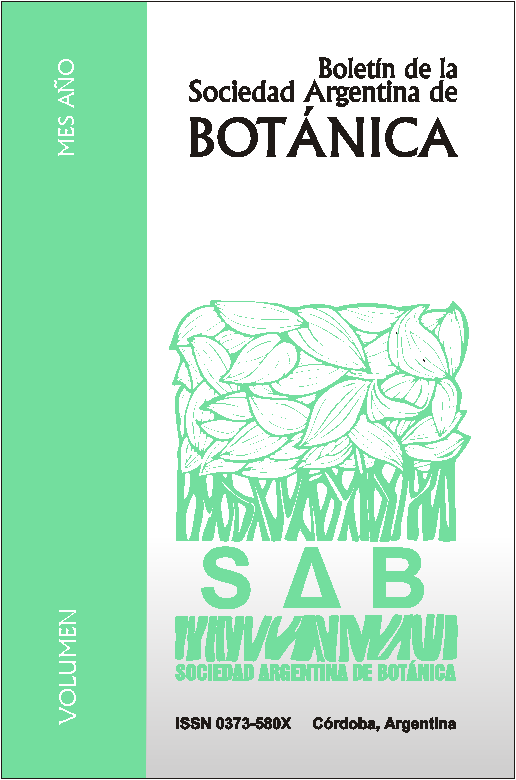Fast movement of alien species in the central region of Chile. Reconstruction through history and palynological evidence.
DOI:
https://doi.org/10.31055/1851.2372.v52.n1.16914Keywords:
introduction, plants, pollen, comparison, historical data.Abstract
Fast movement of alien species in the central region of Chile. Reconstruction through history and palynological evidence.To understand the dynamics of plant communities that currently comprise central Chile, a pollen-sedimentary analysis was performed that differentiated between native and exotic
taxa. This was complemented with a historical reconstruction of the past 500 years of the Itata valley, Bio-Bio Region. With this, three historical periods were established: Pre-hispanic Situation, the valley is described as a plain provided with xeromorphic vegetation, poor in species; Agricultural and Livestock
Boom period, the first exotic plants emerged: Poaceae> 40um, Rumex, Rutaceae, Prunus, shamrocks and thistles, which acclimatized and expanded rapidly, boosted further by war conflicts and socio-cultural movements of the XVII-XIX centuries; Forestry Period, the following exotic species were registered: Alnus, Acacia, Eucalyptus, Cupressus and Pinus, introduced with the objective of halting soil erosion and meet the growing demand in wood. In only 250 years (1600-1850), the number of exotic species may have equaled native species. However, these may have adapted to less favorable soils, not greatly
affecting the native trees. Stands out the pine, its introduction in the region may have occurred in ~ 1850, taking only 50 years to dominate the natural landscape of the basin
Downloads
Published
Issue
Section
License
Provides immediate and free OPEN ACCESS to its content under the principle of making research freely available to the public, which fosters a greater exchange of global knowledge, allowing authors to maintain their copyright without restrictions.
Material published in Bol. Soc. Argent. Bot. is distributed under a Creative Commons Attribution-NonCommercial-ShareAlike 4.0 International license.





